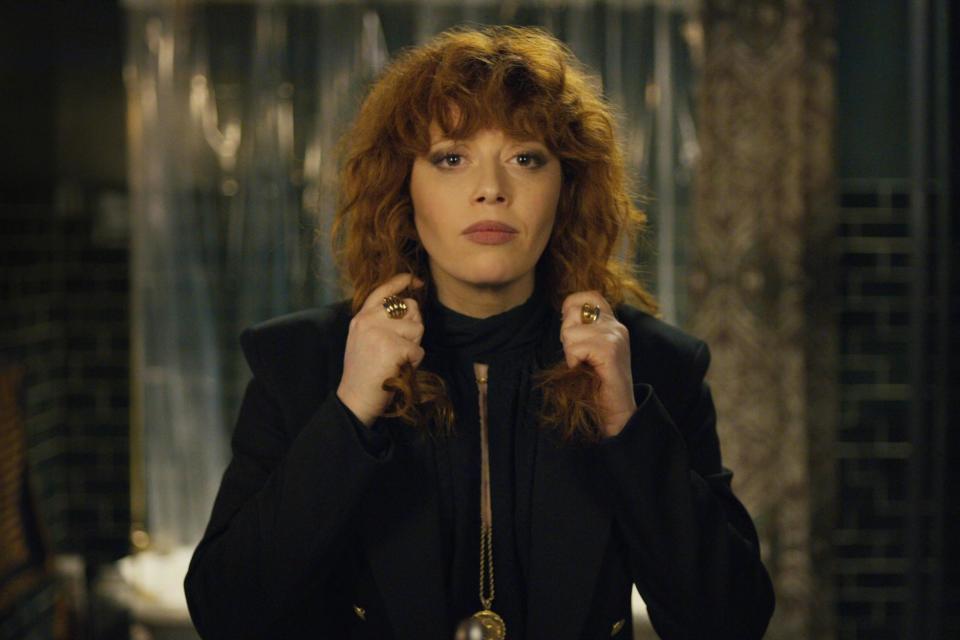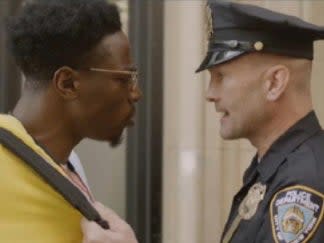Loops, I did it again: Why there’s more to time loop movies than Groundhog Day

Time loop stories are now a genre of their own: Cristin Miloti as Sarah Wilder in ‘Palm Springs’
(Amazon Prime Video)This year, the awards-season cycle highlighted two stories that are basically about the same thing. Hulu’s Palm Springs, a film about being stuck reliving the same day over and over, earned two Golden Globe nominations, while Netflix’s Two Distant Strangers, a film about being stuck reliving the same day over and over, scooped the Oscar for Best Live Action Short Film. They are different in many ways – Palm Springs is a romcom, Two Distant Strangers a harrowing story about police brutality – but it is the same central hook that essentially holds each narrative together.
It’s no surprise that, at this point, their similarities would go unnoticed. After all, time loop stories are now a genre of their own. Two years ago, we had the 2019 Netflix series Russian Doll, and two years before that, time loop slasher film Happy Death Day. This year, we’ve also seen the release of teen romance The Map of Tiny Perfect Things (also adding to the roster of stories that seem to all have the same title), and the upcoming Boss Level, a movie about a man being hunted by assassins on repeat, seemingly for eternity. The list of films and television shows that hinge on the same idea really does go on and on – which has left me wondering why they seem to keep coming back around.
It’s impossible to talk about these stories without acknowledging the timelessness of the father of them all, 1993’s Groundhog Day, which follows disenchanted weatherman Phil Connors (Bill Murray) as he finds himself stuck in a cycle of repeating a work trip on 2 February. To the soundtrack of Sonny and Cher, we see Phil go through all the stages of grief and eventually driven to the brink, only to discover that true love and generosity, in the form of getting with Andie MacDowell, was the thing that would set him free.
It’s a classic redemption arc, similar to stories like It’s a Wonderful Life or A Christmas Carol, but it works, partly because the ridiculousness of the situation leaves us just as confused and bewildered as Phil. Watching the creativity with which he attempts to make the situation bearable is both hilarious and gruelling. Over the course of what may add up to over a thousand years, Phil collects expertise to conduct a heist, train as a doctor, become a music virtuoso, and learn the backstory of every person in a nearby diner. The film is now largely credited for blowing the doors open for surrealism and philosophy in comedy, influencing a whole generation of filmmakers after it was released. And although Groundhog Day wasn’t the first time loop story – in fact two writers pursued legal action following its release, claiming they were ripped off – its hilarity made it an instant classic that brought the idea to Hollywood.
The endurance of the time loop story suggests there is something deeper to a narrative device which – in theory – sounds quite same-y. Becky Sloviter, producer of Palm Springs, which is a boy-meets-girl story told against the backdrop of an ever-repeating wedding, has pointed out that there is a natural curiosity surrounding how our lives might be if we made different choices. Beyond time loops, we can see that in the success of other classics like The Butterfly Effect, which sees 20-year-old college student Evan Treborn (Ashton Kutcher) attempting to amend his childhood and unintentionally altering his future; Back to the Future, where Marty McFly (Michael J Fox) time travels and almost botches his future chances of being born; 50 First Dates, where Henry Roth (Adam Sandler) gets endless chances to try and woo an amnesiac Lucy (Drew Barrymore); and Sliding Doors, where we get to follow the two parallel timelines of Helen Quilley (Gwyneth Paltrow), as she gets different jobs, different love interests and, crucially, different haircuts. We all like the idea of knowing what if, and time loops specifically allow characters to explore infinite options. Even the most ridiculous.
As audiences, we also love to witness the creativity that springs from a format that has strict limitations: the challenge to use the same characters, devices and settings to craft wildly different scenarios. The result creates a buzz similar to watching (actually good) improv. You’re left on the edge of your seat, constantly wondering: “what’s going to happen this time?” The set of outcomes is virtually infinite. In the case of Palm Springs, it’s that our charmingy nihilistic protagonist Niles (Andy Samberg) has had sex with a substantial proportion of the wedding guests.

Then there are also the broad-ranging emotional beats that are offered by a time loop: humour, absurdism and reckless abandon, but also character growth, existentialism and philosophising. In Russian Doll, Nadia Vulvokov (Natasha Lyonne) can’t stop dying on the night of her 36th birthday party, which gradually depletes in guests every time she “regenerates” – something Lyonne has said is symbolic of the cycle of addiction. Most time loop stories, in some way or another, touch on the eternal issue of death, with characters almost always concluding that to die one day (and not to be brought back to purgatory) might actually be a good thing. That is no small feat for a device that appears to be so simple.
Of course, there can only ever be one Groundhog Day. But writers of subsequent time loop movies have managed to keep the style fresh by simply acknowledging that it has been done in the past, and enduring each time to add something new. Palm Springs does this to the extreme. In fact it doesn’t even bother to properly tell its audience how the endless rebooting function works. One of the writers, Andy Siara, recently told The Ringer that the Groundhog Day-style character trajectory in this kind of scenario (confusion, belief that they can escape, existential despair, suicidal behaviour, deciding to learn every language or become a concert pianist) simply wasn’t necessary: “Audiences have already seen that movie before.” And so, when explaining his predicament to Sarah Wilder (Cristin Milioti), who is new to the time loop, Niles can’t help but give off the impression that he is already kind of over it. He cuts right to the chase, saying, in a slightly bored tone: “It’s one of those infinite time loop situations you might have heard about.”
But just because the format can reap great results, doesn’t mean it’s foolproof. The much more unsubtle Two Distant Strangers, in my opinion, is an example of how the genre can backfire. The Netflix short, which was rushed out after the death of George Floyd, follows Black American graphic designer Carter James (Joey Bada$$) stuck in a loop on the way home from a one-night stand, in which he is incessantly shot and killed by a cop, again and again, for half an hour. It’s not necessarily the kind of film you want to cosy up to on a Friday night, nor is it an emotional journey, or even the sort of thing that will actually enhance your understanding of its subject matter. It’s the worst of all possible worlds. The writers’ choice to murder their protagonist brutally and graphically, over and over, makes for a shallow and repetitive show-and-tell approach to a deep-rooted political issue. Rather than make genuine commentary on the reasons for racist policing, the Groundhog Day effect just emulates the real life experience of seeing Black people murdered again and again in viral videos circulated on social media; a phenomenon many people in the real world want to escape.

Interestingly, however – in a strange twist reminiscent of the Groundhog Day lawsuit fiasco – last month filmmaker Cynthia Kao suggested on TikTok that Two Distant Strangers plagiarised a (better, and shorter) film she made and posted on YouTube in 2016. Since the maker of Two Distant Strangers, Trayvon Free, has responded to allegations saying the idea was his own, we can’t say for sure what happened. But what we do know is that the time loop storyline is such a bewitching tool that over the course of three decades, writers have time and time again jumped at the chance to use it as a means of expression.
Although these stories aren’t always done well, watching the evolution of the genre is addictive. It’s why writers and audiences keep coming back to it again and again. Coincidentally, in the case of the pre-pandemic creation Palm Springs, the repetition of successive lockdowns has likely only increased its appeal. Time loop movies and TV shows have always been powerful in their potential to entrance, shock and mystify. But they are also unique in their ability to take on life’s biggest problems in such a humble format. It’s for this reason that they are such prominent features of the past, the present, and undoubtedly the future.
Read More
Palm Springs review: Andy Samberg’s time-loop romcom has hidden depths
John Hawkes: ‘I play a lot of characters who you might want to avoid’


